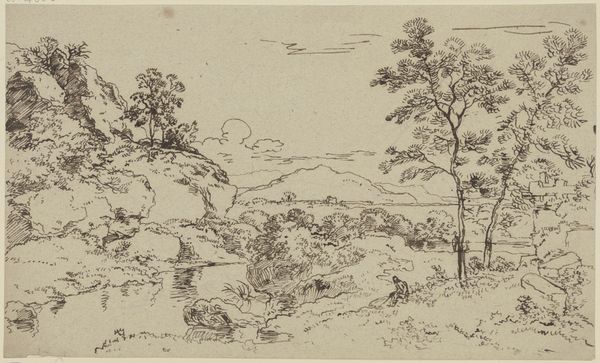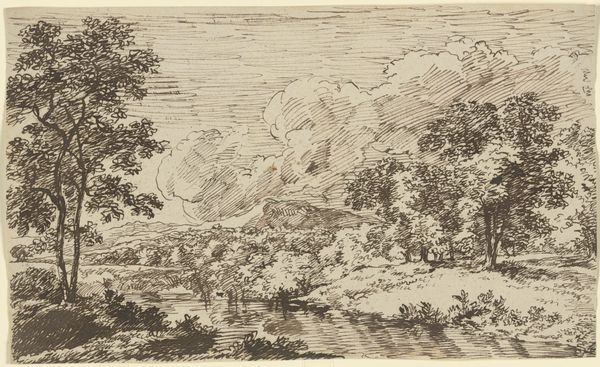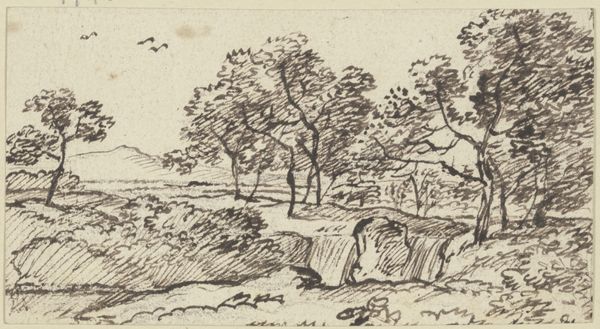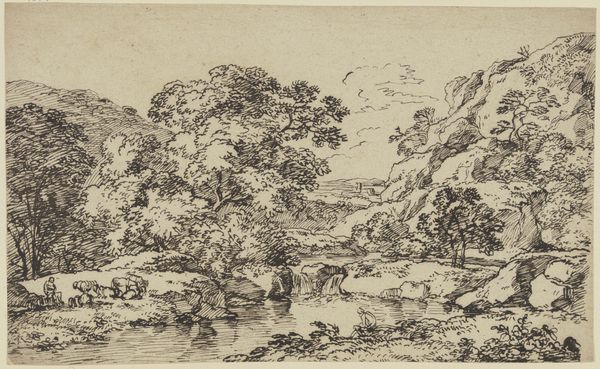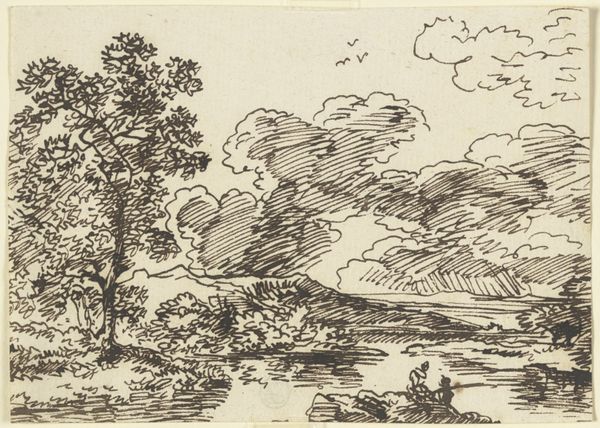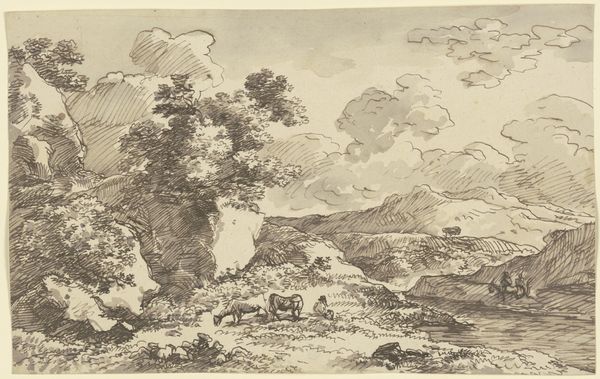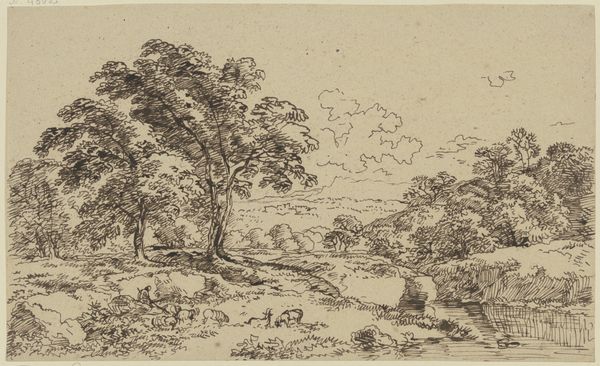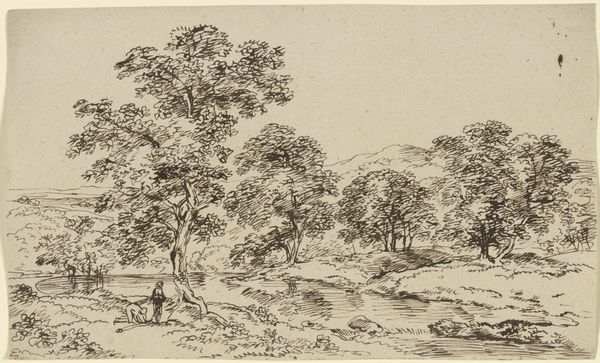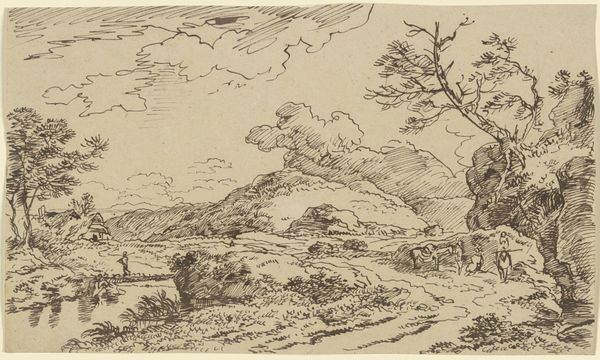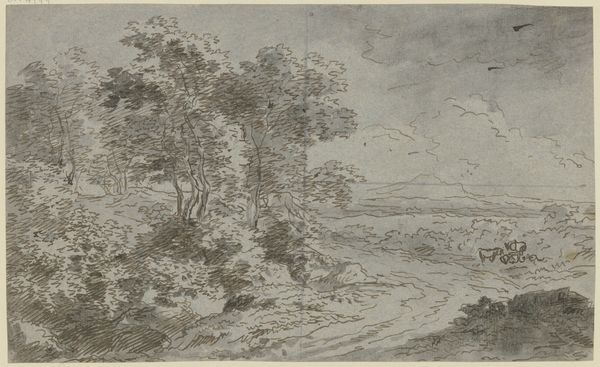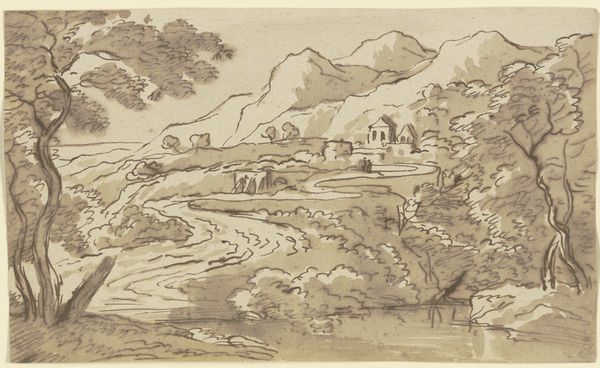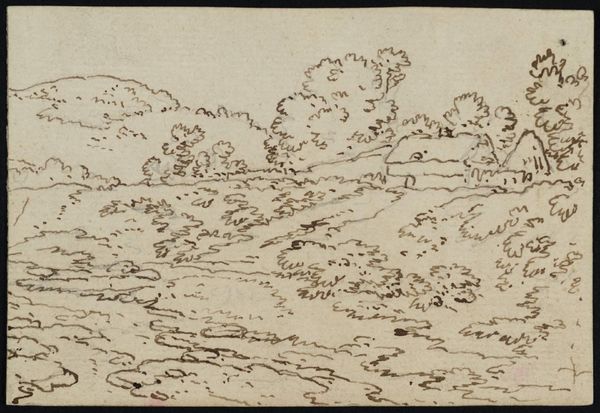
drawing, dry-media, impasto, ink, pen
#
drawing
#
ink drawing
#
pen sketch
#
landscape
#
dry-media
#
impasto
#
ink
#
sketch
#
romanticism
#
pen
Copyright: Public Domain
Curator: The idyllic scene before us is an ink drawing entitled "Ideallandschaft mit Schäfern und weidenden Schafen," which translates to "Ideal Landscape with Shepherds and Grazing Sheep." It is attributed to Franz Kobell and currently resides here at the Städel Museum. Editor: It feels so peaceful! The composition, with its gentle rolling hills and fluffy clouds, evokes a sense of serene contemplation. The monochrome palette lends it an old-world charm, as if capturing a scene from a forgotten pastoral era. Curator: Indeed. Works like these reveal a longing for simpler times. Kobell, though trained in Mannheim, participated in a broader cultural movement of idealizing the rural past. Consider the rising industrialization in 18th- and 19th-century Europe; this artwork can be read as a visual retreat from its societal changes. Editor: And within this retreat, observe how the symbols reinforce a narrative. Sheep traditionally embody innocence and community. Do you see how the shepherds' relationship with the landscape symbolizes humankind's harmony with nature? I find myself wondering if it presents more of an aspiration rather than a description of real society. Curator: That's a key point. It certainly presents a romanticized view. The art world has historically privileged representations of idealized scenes like this. These images were often commissioned or collected by patrons invested in maintaining social hierarchies. After all, they could afford to escape the grimier aspects of urban life. Editor: It brings to mind how the iconography of the landscape has always been intertwined with notions of identity and belonging. Notice how art of this time frequently showcases an idea, sometimes even a fantasy, of a unified cultural body, deeply connected to its land. That big, monumental tree at the border...almost a character of its own. Curator: Precisely. This particular landscape resonates within a history of similar artistic visions—pastoral scenes designed not just for aesthetic enjoyment but also to reinforce cultural ideals. Looking closer reveals a lot about society's desires and its carefully curated self-image. Editor: It has certainly made me ponder the role that landscapes have historically played in expressing—and shaping—our collective memories and identities. Curator: For me, it reinforces that we view art with critical thinking in order to understand how institutions can give artwork its significance.
Comments
No comments
Be the first to comment and join the conversation on the ultimate creative platform.
